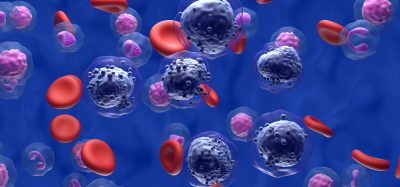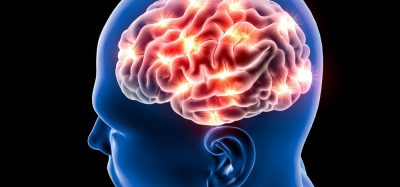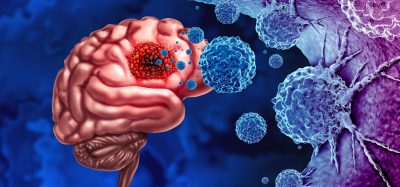From graphene to grey matter: tech that supercharges brain organoids
Posted: 21 August 2025 | Drug Target Review | No comments yet
Researchers at UC San Diego have discovered a graphene-based technology that accelerates the maturation of human brain organoids, offering a safer, non-invasive way to model diseases like Alzheimer’s.


Researchers from the University of California San Diego Sanford Stem Cell Institute have developed a new way to stimulate and mature human brain organoids using graphene.
The study, published in Nature Communications, introduces Graphene-Mediated Optical Stimulation (GraMOS) – a safe, biocompatible method that simulates neural activity without damaging fragile neurons.
“This is a game-changer for brain research,” said Dr Alysson Muotri, corresponding author, professor of pediatrics, and director of the Integrated Space Stem Cell Orbital Research Center at UC San Diego.
Biomarkers aren’t just supporting drug discovery – they’re driving it
FREE market report
From smarter trials to faster insights, this report unpacks the science, strategy and real-world impact behind the next generation of precision therapies.
What you’ll unlock:
- How biomarkers are guiding dose selection and early efficacy decisions in complex trials
- Why multi-omics, liquid biopsy and digital tools are redefining the discovery process
- What makes lab data regulatory-ready and why alignment matters from day one
Explore how biomarkers are shaping early drug development
Access the full report – it’s free!
“We can now speed up brain organoid maturation without altering their genetic code, opening doors for disease research, brain–machine interfaces and other systems combining living brain cells with technology.”
A smarter way to grow the brain in a dish
Brain organoids are powerful tools for studying neurological disease. However, they typically mature too slowly to accurately reflect conditions like Alzheimer’s – which unfold over decades.
Past stimulation approaches either relied on genetic modification or direct electrical currents – which both have their limitations. GraMOS avoids these barriers by using graphene’s optoelectronic properties to convert light into gentle electrical cues –encouraging neurons to connect and communicate naturally.
“Using graphene and light, we were able to nudge the neurons to form connections and mature more rapidly, without traditional optogenetic tools,” explained Dr Elena Molokanova, co-corresponding author and chief executive officer and inventor of GraMOS technology at NeurANO Bioscience. “It’s like giving them a gentle push to grow up faster – essential for studying age-related diseases in a dish.”
Key findings of the study
- Faster development: GraMOS accelerated brain organoid maturation, producing stronger connections, organised networks and advanced communication between neurons – even in Alzheimer’s patient-derived models.
- Safe and biocompatible: Graphene did not harm organoid structure or function over extended periods.
- Enhanced disease modelling: Stimulated Alzheimer’s organoids revealed early functional differences in network connectivity and excitability.
- Robotic integration: GraMOS-enabled organoids controlled a simple robot in real time, responding to visual stimuli.
From the lab to Alzheimer’s research
By accelerating neural development, GraMOS allows researchers to study diseases earlier and under more realistic conditions. This could shorten drug discovery timelines and improve testing for treatments targeting Alzheimer’s and similar diseases.
“Our technology bridges a critical gap in organoid research,” said Dr Alex Savchenko, co-senior author and chief executive officer of Nanotools Bioscience. “It offers a reliable, repeatable way to activate neurons, which can transform both fundamental neuroscience and translational studies.”
Brain meets machine
In a test, GraMOS connected graphene-stimulated organoids to a robotic system. The robot – equipped with sensors – sent signals to the organoid when it encountered an obstacle. The organoid then generated neural activity that redirected the robot – completing the loop in under 50 milliseconds.
This points toward future neuro-biohybrid systems in which living brain tissue integrates with robotics to drive advanced prosthetics, adaptive interfaces or even new forms of computation.
Looking forward
The study demonstrates how graphene can unlock new possibilities in neuroscience, nanotechnology and neuroengineering. Beyond Alzheimer’s and neurodegenerative diseases, GraMOS may be applied to tissue engineering, regenerative medicine and even AI computing systems.
“This is only the beginning,” said Muotri. “The combination of graphene’s versatility and brain organoid biology could redefine what’s possible in neuroscience, from understanding the brain to creating entirely new technological paradigms.”
Related topics
Bioengineering, Drug Discovery, Drug Discovery Processes, Nanomedicine, Nanotechnology, Neurons, Neurosciences, Optogenetics, Organoids, Regenerative Medicine, Robotics, Stem Cells
Related conditions
Alzheimer's
Related organisations
NeurANO Bioscience, the University of California
Related people
Dr Elena Molokanova (CEO at NeurANO Bioscience)








